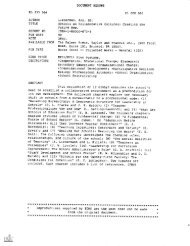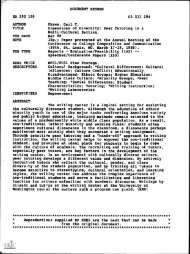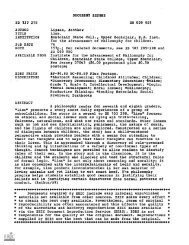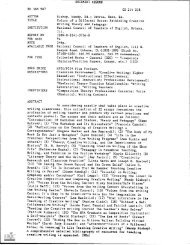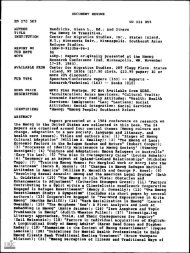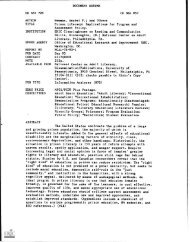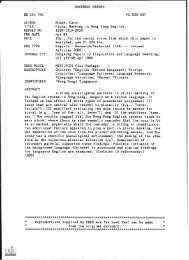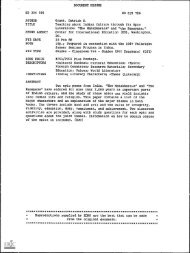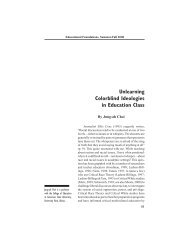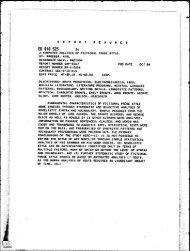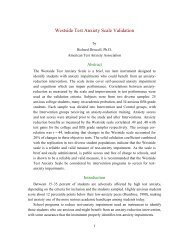Higher Education and Employment: An International Comparative ...
Higher Education and Employment: An International Comparative ...
Higher Education and Employment: An International Comparative ...
You also want an ePaper? Increase the reach of your titles
YUMPU automatically turns print PDFs into web optimized ePapers that Google loves.
<strong>Higher</strong> <strong>Education</strong> <strong>and</strong> <strong>Employment</strong>error indicates the importance of each factor, which may also be rated asstatistically not important. In each identified case, the null hypothesis wasthat the reason was not important. On a three-point scale, where 2indicated 'very important', 1 indicated 'important', <strong>and</strong> 0 indicated 'notimportant', the null hypothesis would be to set the average score in thepopulation at zero <strong>and</strong> test if the average score of the hypothesis issignificantly different from zero. This can be done by applying the 't'statistic. From the simple cross-tabulations, an idea can be formed as towhether any one reason was more important for a particular group ofstudents. This could later be tested statistically with a more sophisticatedstatistical analysis. In several cases, the same question was asked of thestudents, the graduates <strong>and</strong> the employers. For example, the importance ofthe various characteristics which would make a job satisfactory to anindividual was tested for all three population groups.The samplingThe sampling design varied from country to country depending on thecomplexity of the population of students, graduates <strong>and</strong> employers <strong>and</strong> theavailability of a sampling frame. It was easier to identify the population ofstudents because the list of institutions of higher education is much smallerthan the list of employing units in a country. The sampling of graduates <strong>and</strong>employers was a mo-e difficult task. Most difficult was the sampling of theunemployed graduates, because of problems in tracing them, <strong>and</strong> becauseit was expensive to survey them, owing to lack of information on theiraddresses. However, attempts were made to trace them for the studies inWest Bengal, Bangladesh <strong>and</strong> Sri Lanka. Employed graduates were tracedthrough their employers. This process was chosen instead of an independentsurvey of graduates in order to save time <strong>and</strong> money <strong>and</strong> providean opportunity for identifying interaction between the graduates <strong>and</strong>employers.The sampling design described below was used in the study in thePhilippines.The student survey <strong>and</strong> the sample Information on the characteristics,attitudes, aspirations, <strong>and</strong> expectations of the students in the country wasgathered through a survey among the post-secondary student population inthe school year of 1977/78. Of the total student population of 613,807, 1.48per cent or 9,105 students responded to a fourteen-page paper-<strong>and</strong>-pencilquestionnaire. Sampling was done using three majo, criteria: (1) the yearlevel of the student, (2) the region of the school in which the student wascurrently enrolled, <strong>and</strong> (3) the field of specialization of the student. Onlystudents in their third or fourth year of post-secondary education were26



